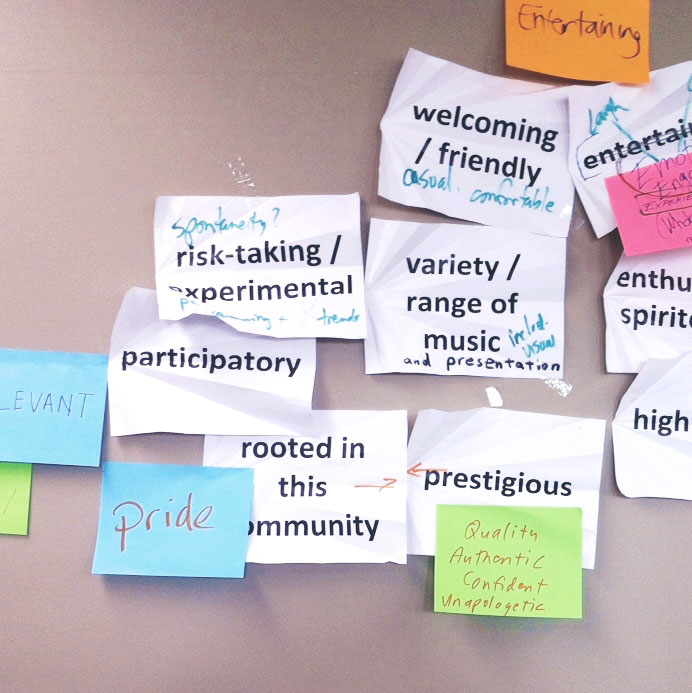Methods & Tools
What’s in our toolkit? A wide array of social research & evaluation methods drawn from anthropology, psychology, sociology, public policy, marketing, and other disciplines. Plus some creative techniques that go beyond asking questions to visioning, co-creation, and human-centered design.


Quantitative research
When the goal is to measure, compare, categorize, segment, or otherwise quantify, then you need numerical data and rigorous statistical analysis. These are the tools that count (pun intended).
- Online surveys
- Intercept/on-site surveys
- Demographic segmentation (e.g., by geography, age of children, etc.)
- Behavioral segmentation (e.g., by member or subscriber status, attendance patterns, etc.)
- Attitudinal segmentation (based on experiential preferences, engagement or learning styles, etc.)
- Conjoint analysis (attribute testing and packaging)
- Database mining & mapping
- Data overlays (e.g., from Census or commercial data)
- Tracking studies (change over time)
- Concept testing
- Social-media analysis
- Cognitive interviewing (question pre-testing)

Qualitative research
When the job is to reveal, probe, generate, explore, or react, then it’s depth and nuance you’re after, not statistics. You need open-ended, humanistic techniques based on conversation and observation.
- In-depth interviews (in-person, video, phone)
- Focus groups, mini-groups (in-person, online)
- Co-creative ideation and planning workshops
- Audience panels & community advisory boards
- Community ethnography (participant-observation & in-context interviewing)
- Audience journey mapping
- Experience sampling (recruited attendance and feedback)
- Prototyping & concept testing
- Webnography
- Social media analysis
- Follow-along interviews (e.g., observed museum visits)

Facilitation, planning, capacity-building, etc.
Mostly, we study audiences. But in some projects, the “unit of analysis” is the organization itself, or the ecosystem of providers and producers in the local community or national field. In other projects, our clients want additional kinds of consulting before, between, or after the audience and community research studies we conduct. It’s all part of thought-partnership.
- Stakeholder interviews
- Visioning, planning, and strategy workshops (design & facilitation)
- Logic model development (theory of change)
- Planning consultation & strategy articulation
- Capacity-building & technical assistance
- Change-management & implementation support
- Collaboration/consultation with other consultants & vendors
I enjoy working with the breadth of different clients at Slover Linett. It’s exciting to work on projects that not only span a range of different research methodologies but also content areas – whether they’re based in the performing arts, public spaces, the sciences, or beyond. And, in partnering with these organizations, I’m always learning something new about these fields and finding ways to continually modify our research to better suit them.”
